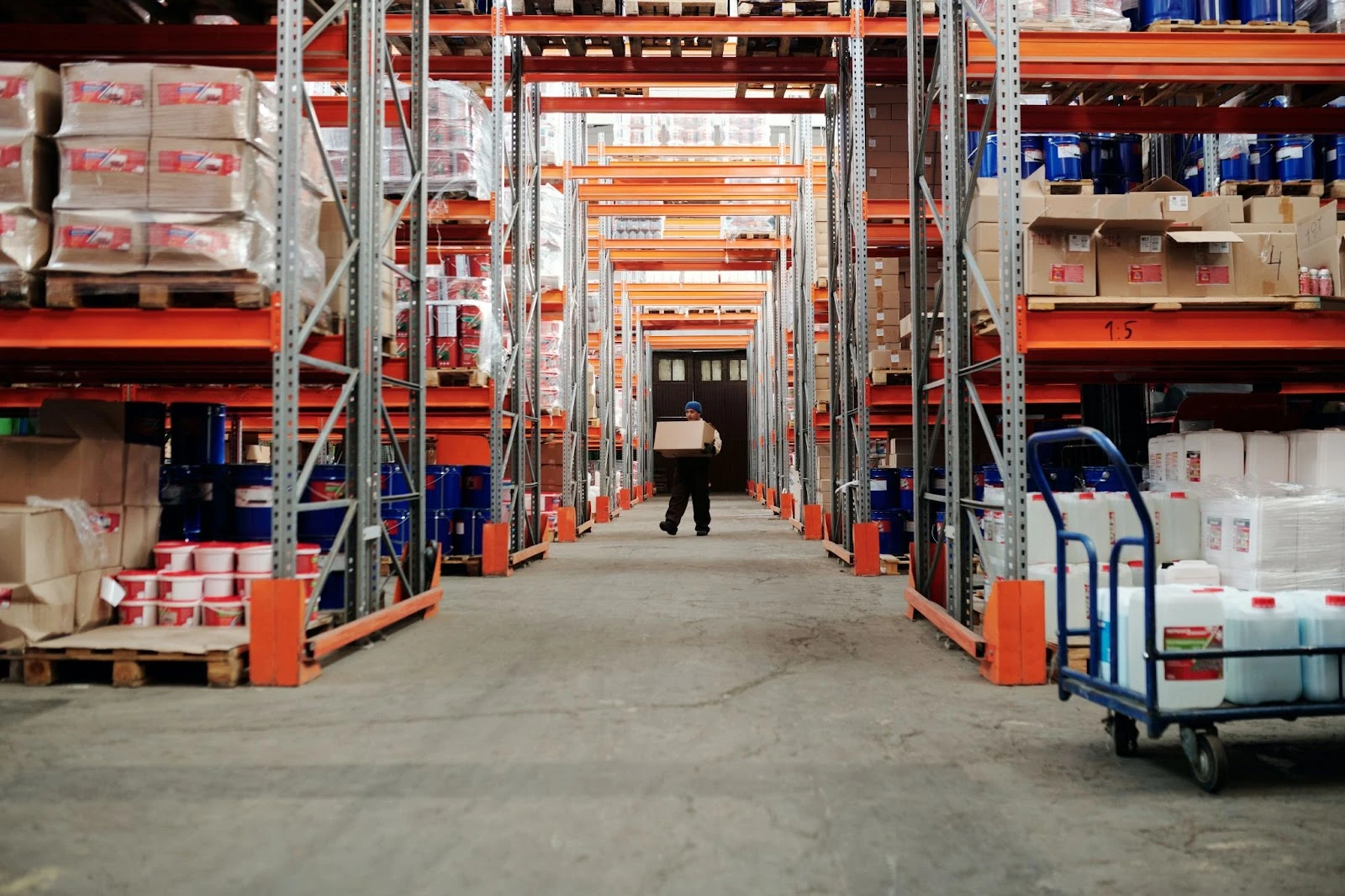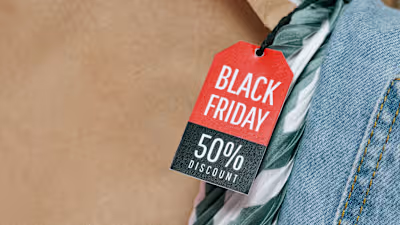2,000-word blog for Hive: Returns management for e-commerce

Managing returns, also known as reverse logistics, affects every part of your business - even more so during peak season. Returns will have a direct impact on your warehousing, storage, inventory and even your profitability. Not only is optimizing your returns strategy crucial to your e-commerce brand, it matters to your customers too.
According to Invesp, 92% of consumers said that they would buy from a brand again if their returns process is easy. There's no escaping how crucial it is to have an optimized returns strategy, especially during peak season shopping events like Black Friday, Singles' Day and Christmas. The question is, what does an optimized returns management system look like?
Here are some things for you to think about.
Why improve your returns management specifically before peak season?
Peak season is a bumper time for buyers new to your brand to hit your e-commerce store looking for bargains. Take Black Friday for example. If you participate in the biggest shopping event of the year, you're likely to get an influx of first time buyers.
The problem is, because these buyers are not familiar with your product or brand, they are more likely to return items. Plus, a lot of shoppers will over buy on Black Friday with the intention of sending back some products once they have seen everything in real life.
The good news is, returns are not something to be feared. In fact, a solid returns strategy can work in your favor, helping customers to come back and make a purchase at a later date. That's why optimizing your returns management ensures that you're prepared.

4 ways to reduce returns this peak season
Prevention is better than cure when it comes to reducing returns. There are things that you can do to limit the number of items that end up coming back to your warehouse or fulfillment center, including:
1. Analyze your current returns data
Start by organizing your returns data in a way that makes it easy to analyze, for example:
Return reasons
Customer feedback
Product categories
Return location
You can then break this data down, starting with the reasons why customers are returning products, and identifying patterns. You can then categorize the returns into specific issues. For example, size discrepancies, shipping damage, inaccurate product descriptions etc.
If you see patterns, figure out ways to fix the issues and then aim to improve year on year based on what you're learning from the data.
2. Audit your product descriptions
According to ReturnGo, 81% of shoppers think that better product descriptions would help to reduce false expectations and returns. If you're experiencing a lot of returns, audit your product descriptions. Are they missing information that customers would find useful? Is the description up-to-date and accurate?
It's worth checking things like product measurements and materials. Equally, you should include at least one use case with every product description to give shoppers context and highlight how your products have been enjoyed by others. This helps to break down buying barriers and reduces the likelihood of returns.
3. Check your product images
75% of online shoppers rely on product images when making a purchase, according to Locad. Do your product images truly reflect what you're selling? Equally, have you got the right images featured with the right products?
For most shoppers, seeing is believing, and if they unbox your product expecting one thing, only to be left disappointed, you can expect it to be returned.
It is vital that your product images are as clear as possible. For example, if you sell cosmetics like makeup, make sure your images demonstrate your product in use on different skin tones. Use different lighting, backgrounds and angles to present your products in the best way possible.
Better still, use images that have been taken by your customers to show others how your products can be used in real life. This reduces the likelihood of products getting sent back as customers trust other customers more than most.

4. Check addresses to reduce passive returns
Sometimes it's not even customers returning products. They come back because your carrier doesn't have the right address and the customer never even received the package. A lot of returns happen because of address errors.
It happens, customers can inadvertently enter an incorrect address, whether it's the wrong postcode or even a house number. This can be avoided by having an 'invalid address alert' as part of your purchase completion process. That way, customers can't complete an order until the address has been corrected.
Hive for example has an address validation feature that does this, which lets customers correct delivery information themselves, even after ordering.
7 Best practices for returns management this peak season
Returns management is not a 'one size fits all'. Your strategy will depend on your brand. That's why you can pick and choose from these best practices to see what fits with your products and customers:
1. Have a clear returns policy on your website
According to UPS, returns policies get viewed by 68% of shoppers. That means you need a clear, customer-friendly returns policy that's easy to find on your website.
You should outline the conditions, timeframes, and procedures for returning products, making customers aware of any restrictions or fees that apply. Use easy to understand language and make sure that your policy is reasonable.
Remember, 92% of consumers said that they will buy from a brand again if their returns process is easy. This means that even though a customer is returning an item on a given occasion, they are likely to be back, boosting your chances of retention at a later date.
2. Use a returns portal
There's power in a branded returns portal. They're beneficial to your brand and your customers. Why? Because you can automate the returns process. Customers have everything they need all in one place to send items back. A returns portal saves you time, and is convenient for your customers.
A portal takes the pressure off your customer support team, while empowering customers to handle the returns process without assistance. In fact, according to Bizereport, 73% of consumers want to be able to solve product problems on their own.
With access to a portal, customers can print shipping labels and self-manage the entire returns management workflow without needing authorization from your customer service team.
Equally, a returns portal gives you an opportunity to gather information on why customers are returning items, while giving you the chance to persuade people to exchange a product instead of returning it.
3. Offer your customers multiple return options
The way customers want to return items is changing. According to a recent Forbes report, consumers now rank in-person, box free returns as the number one preferred option for returning products bought online, while mail-in returns have dropped to option four.
Only 21% of shoppers now prefer to pack items and schedule a pick-up compared to 54% preferring in-person drop-off at a designated retail location. 79% now try to avoid mail-in returns altogether. This makes multiple return options all the more important as consumer habits change.
You can offer the option to return parcels by taking them to a post office or another pick-up location that's convenient for customers. Better still, they can return items with a different carrier if it means dropping items off at a more convenient location. The important thing is to widen the number of return options available to customers.
4. Plan what to do with different return types
Returned products will arrive back at your fulfillment center or warehouse in different states. Some will remain unopened and can be restocked, others will have been opened and need to be checked, then there are items that come back damaged and either need to be disposed of or resold at a lower price - provided that it's safe to do so.
Having a clear plan for each type of return will ensure that items can quickly be resold or disposed of. This will prevent overstocking by getting items back into circulation or removing them from your inventory completely.
For example, say you sell cosmetics, set a rule in your fulfillment that items that have not been opened can be restocked, and items where the seal is broken must be disposed of. Having a clear set of rules will speed up the process in your fulfillment center.

5. Get photos of returns
There are two reasons for doing this.
First, if your fulfillment center doesn't know whether to restock or dispose of a returned product, you can see it for yourself and make the final call based on your returns policy.
Second, it will help to avoid return fraud. This happens when shoppers try to deceive retailers during the product return process, usually by misleading e-commerce brands as to the condition of a returned item.
Return fraud can be an expensive problem for your brand. In fact, according to the National Retail Federation, for every €90 of returned merchandise, retailers will lose €9 to fraud. Photographic evidence helps to combat return fraud, and ensure that you're making the right decision in terms of what to do with returned inventory.
You need to make sure that your warehouse team has the capability to take and upload pictures as this will reduce the need for you to be there in person to assess the condition of returned items.
6. Set different return times for different SKUs
A great way to manage the flow of returns is to set different timeframes for different products. Not every item needs to be returned immediately - though some do, for example perishables or other products with an expiration date. Meanwhile, a longer return time frame is ideal for products with no expiry date.
That said, not all returns policies are created equal, especially when it comes to timeframes. Interestingly, a study by the University of Texas found that the longer your returns timeframe, the less likely customers are to return a product. That's why most retailers choose a 90-day policy.
Ryan Freling, part of the research team, explains:
"This is arguably the result of the endowment effect. That would say that the longer a customer has a product in their hands, the more attached they feel to it.
"Plus, the long timeframe creates less urgency around the decision over whether or not to take it back. Since they don’t feel pressure to take it right back to the store, they kind of sit with it and live with it and say, ‘Well it’s not that bad,” Freling adds.
With that in mind, it makes sense to give customers a longer timeframe in which to return products because it increases the likelihood of fewer returns.
7. Offer alternatives to refunds
When products are returned, refunds are usually offered as a knee-jerk reaction to appease shoppers and to avoid a poor customer review.
While you must offer a refund if you sell certain items that are faulty, such as personalized or custom-made items, and some perishables, you don't have to immediately revert to refunds for other products - unless a customer's satisfactory rights are breached.
You could also try to offer alternatives to a refund like a store voucher, an item swap or exchange. Providing a solution that doesn't involve a return can help to rescue a sale and save you revenue.
Partner with Hive to tailor your returns experience to your brand’s needs
Hive adds value to your returns strategy, offering unique features and services that other 3PL companies can't provide. Get access to a returns process that is tailored to your e-commerce business and your SKUs.
To make your returns even easier for you and your customers, we have a powerful portal that empowers customers to sort out returning orders without the need to involve your support team. Plus, the portal gathers key data that you can use to understand why customers are returning items and identify ways you can reduce items being sent back.
For a fully optimized returns strategy this peak season, choose Hive. Get started, today.
Like this project
Posted Aug 20, 2023
2,000-word, ghost written SEO blog for Hive offering tips and strategies to help e-commerce brands manage returns during peak season.








